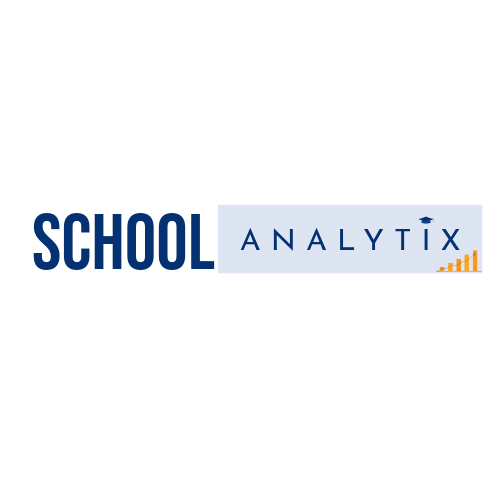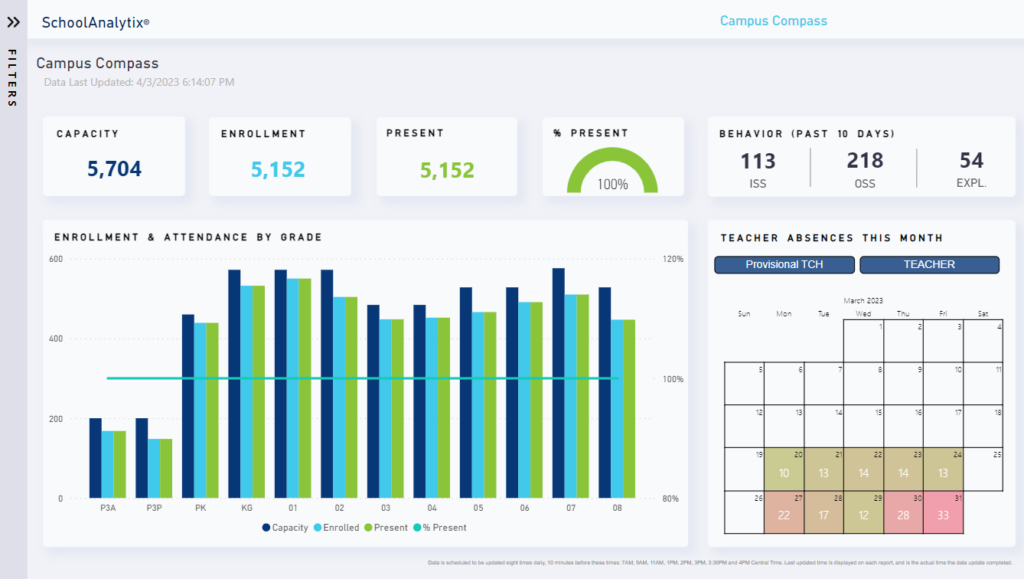In the dynamic landscape of education, the ability to make informed decisions based on real-time data is paramount. As schools strive to meet the diverse needs of students and improve overall performance, data-driven insights play a crucial role in guiding administrative and instructional practices. One of the most effective tools for visualizing and analyzing educational data is Microsoft Power BI. In this article, we’ll explore the process of creating custom dashboards in Power BI specifically tailored for school administrators and educators.
Understanding the Importance of Custom Dashboards in Education
Custom dashboards in Power BI offer a centralized platform for consolidating and visualizing various datasets relevant to education. These dashboards provide stakeholders, including school administrators, principals, teachers, and support staff, with actionable insights to enhance decision-making, monitor progress, and drive improvement initiatives. Some key benefits of custom dashboards in education include:
Data Accessibility: Custom dashboards empower stakeholders to access relevant data in real-time from a single interface, eliminating the need to navigate multiple systems or reports.
Visual Data Representation: Visualizations such as charts, graphs, and maps make complex data more digestible and facilitate quick comprehension of key trends and patterns.
Customization and Personalization: Administrators and educators can tailor dashboards to align with their specific goals, priorities, and areas of interest, ensuring that the data presented is relevant and actionable.
Data-Driven Decision-Making: By leveraging insights from custom dashboards, schools can make informed decisions, implement targeted interventions, and track progress towards goals more effectively.
Key Steps in Creating Custom Dashboards with Power BI
Creating custom dashboards in Power BI involves several key steps, from data preparation and visualization to dashboard design and sharing. Let’s explore each step in detail:
1. Define Dashboard Objectives and Key Metrics: Before diving into dashboard creation, it’s essential to clarify the objectives and identify the key performance indicators (KPIs) that will drive decision-making. Work closely with stakeholders to determine the specific metrics and data sources that align with the school’s goals and priorities. Common KPIs in education may include student attendance rates, academic performance metrics, discipline incidents, graduation rates, and demographic trends.
2. Gather and Prepare Data: Once the objectives and KPIs are defined, gather relevant data from various sources, including student information systems (SIS), learning management systems (LMS), assessment platforms, and spreadsheets. Cleanse and transform the data as needed to ensure accuracy and consistency. Power BI offers robust data preparation tools that streamline the process of shaping and modeling data for analysis.
3. Create Visualizations and Reports: With the data prepared, it’s time to create visualizations and reports that will populate the dashboard. Power BI offers a wide range of visualization options, including bar charts, line graphs, pie charts, maps, and tables. Choose visualizations that effectively communicate the key insights and trends identified through the data analysis. Consider incorporating interactive features such as slicers, filters, and drill-down capabilities to enhance user engagement and exploration.
4. Design the Dashboard Layout: Designing an intuitive and visually appealing dashboard layout is critical for ensuring usability and effectiveness. Arrange visualizations logically, grouping related metrics and KPIs together for easy comprehension. Pay attention to color schemes, fonts, and spacing to maintain consistency and readability. Consider including text boxes or annotations to provide context and interpretation for the data presented.
5. Implement Interactivity and Drill-Down Functionality: Interactivity is a hallmark feature of Power BI dashboards, allowing users to explore data dynamically and drill down into specific details as needed. Configure slicers, filters, and cross-filtering interactions to enable users to interact with the data and focus on areas of interest. Utilize hierarchical drill-down functionality to navigate from high-level summaries to granular insights at the click of a button.
6. Add Analytical Insights and Trends: Incorporate analytical insights and trends derived from the data analysis to enrich the dashboard’s value proposition. Leverage Power BI’s advanced analytics capabilities, such as trend lines, forecasting, and statistical measures, to identify patterns, anomalies, and predictive insights. Annotations and callouts can highlight notable findings and prompt further investigation or action.
7. Test and Iterate: Before deploying the dashboard to end-users, thoroughly test its functionality and performance across different devices and screen sizes. Solicit feedback from stakeholders and iterate on the design based on their input. Continuous improvement is key to ensuring that the dashboard remains relevant and effective in meeting the evolving needs of users.
8. Publish and Share the Dashboard: Once the dashboard is finalized, publish it to the Power BI service to make it accessible to stakeholders across the organization. Determine appropriate sharing settings and permissions to control access and ensure data security. Power BI offers flexible sharing options, including embedding dashboards in internal portals or websites, sharing links via email, or distributing reports through Power BI apps.
Example Use Cases for Custom Dashboards in Education
Custom dashboards in Power BI can be tailored to address a wide range of use cases and scenarios in education. Here are some examples of how custom dashboards can support decision-making and improve outcomes in schools:
Student Performance Monitoring: Track student academic performance metrics such as grades, assessment scores, and progress towards learning objectives. Identify struggling students early and implement targeted interventions to support their academic growth.
Attendance and Engagement Tracking: Monitor student attendance rates, absenteeism patterns, and engagement levels in both virtual and in-person learning environments. Identify trends and outliers that may indicate potential issues requiring intervention.
Discipline and Behavior Management: Analyze discipline incidents, referrals, and behavior trends to identify areas of concern and proactively address student conduct issues. Implement positive behavior interventions and supports (PBIS) to promote a positive school climate.
Resource Allocation and Budgeting: Visualize financial data, including budget allocations, expenditures, and funding sources. Identify opportunities to optimize resource allocation and maximize the impact of investments in instructional programs and support services.
Staff Performance and Professional Development: Track teacher effectiveness metrics, professional development activities, and staff satisfaction surveys. Identify opportunities for coaching, mentoring, and professional growth to enhance teacher effectiveness and retention.
Conclusion
Custom dashboards in Power BI offer powerful tools for school administrators and educators to gain actionable insights, monitor progress, and drive improvement initiatives. By leveraging data visualization and analysis capabilities, schools can make informed decisions, implement targeted interventions, and ultimately improve outcomes for students. Whether tracking student performance, attendance, behavior, or resource allocation, custom dashboards provide a centralized platform for data-driven decision-making and continuous improvement in education. As schools embrace the power of data, custom dashboards in Power BI emerge as essential tools for navigating the complex challenges of the modern educational landscape.
Leveraging SchoolAnalytix for Expert Guidance
While PowerBI offers powerful analytics capabilities, maximizing its potential for student retention requires expertise in data visualization, predictive modeling, and educational analytics. This is where SchoolAnalytix comes into play. As a leading provider of data analytics solutions for educational institutions, SchoolAnalytix offers a wealth of expertise and resources to support institutions in their quest to optimize student retention.
By partnering with SchoolAnalytix institutions gain access to a team of experienced data scientists, educators, and analysts who specialize in leveraging PowerBI for educational purposes. From dashboard design and customization to predictive modeling and intervention strategies,
SchoolAnalytix provides end-to-end support tailored to the unique needs and goals of each institution.

